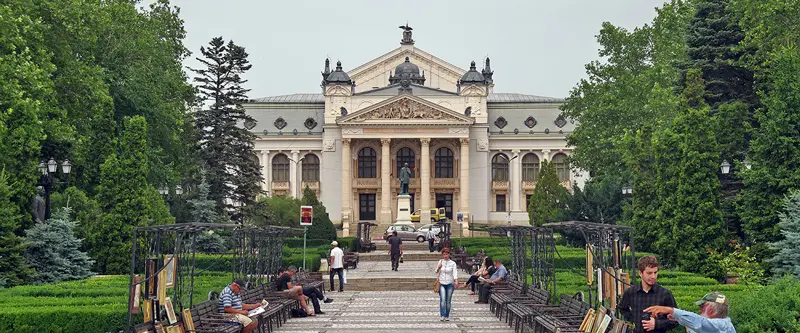Chapters
An iconic monument, the Palace of Culture Iasi was inaugurated in 1925. It is the greatest expression of Neogothic style and marks the end of Romanticism in Romanian architecture. It has no less than 298 rooms hosting four museums, historical artifacts, and art galleries. Its defining elements are the central 55-meter high tower, the rich heraldic decorations, crenels, recesses, and its armored cavaliers on the rooftop. The Hall of Honour is paved with a bestiary with fantastic animals, and the Palace has become a symbol of the city and its cultural scene.
In the present, the Palace is listed in the National Register of Historic Monuments.

Palace of Culture Iasi hall
In front of the neo-gothic Palace of Culture Iasi, there is a monumental equestrian statue of Stephan the Great, former Prince of Principality of Moldavia.
As a compensation for losing the status of political capital, Iasi has received the honorary title of cultural capital – not only of the Moldavia region but across the country. Iasi is also recognized for its prestigious public University, the oldest higher education institution in Romania.
History of the Palace of Culture Iasi
Built in the flamboyant neo-Gothic style, adorned with fantasy-inspired ornaments and heraldic elements, the building is even more awe-inspiring inside, thanks to its vast Gothic marble hall and a room dedicated to Romanian Voivods. The construction of the palace underwent significant delays due to the outbreak of World War I and later served as barracks during World War II.
The communist era left its imprint, as well, as the frescoes of Romanian monarchs were covered with paint. However, since 1906 when the construction of the Palace was initiated on the old ruins of the medieval Princely Court of Moldavia and throughout the ages until today, the Palace of Culture has been an iconic monument, an undeniable landmark and a part of the city’s identity.
In the night of October 11 – 12 1925, the Romanian architect I.D Berindei and his 2 sons spent their time in the tower trying to adjust the clock. In that night The Hora of Unity (Hora Unirii) was heard throughout the city.

Palace of Culture Iasi room






